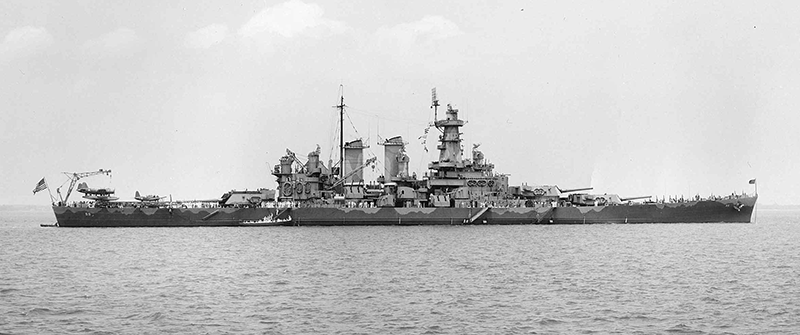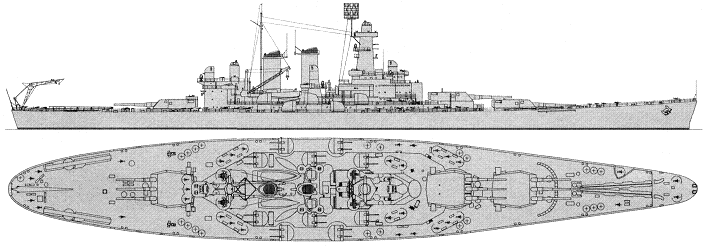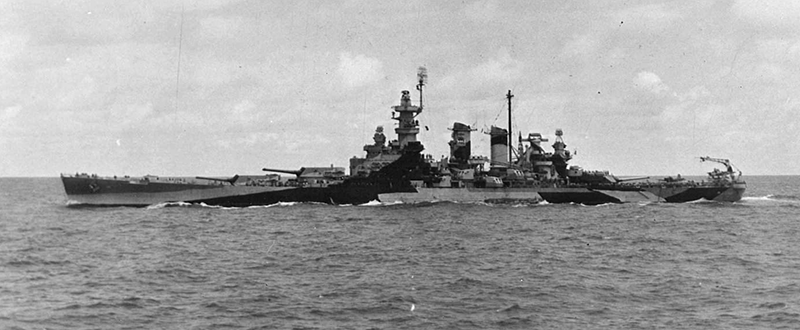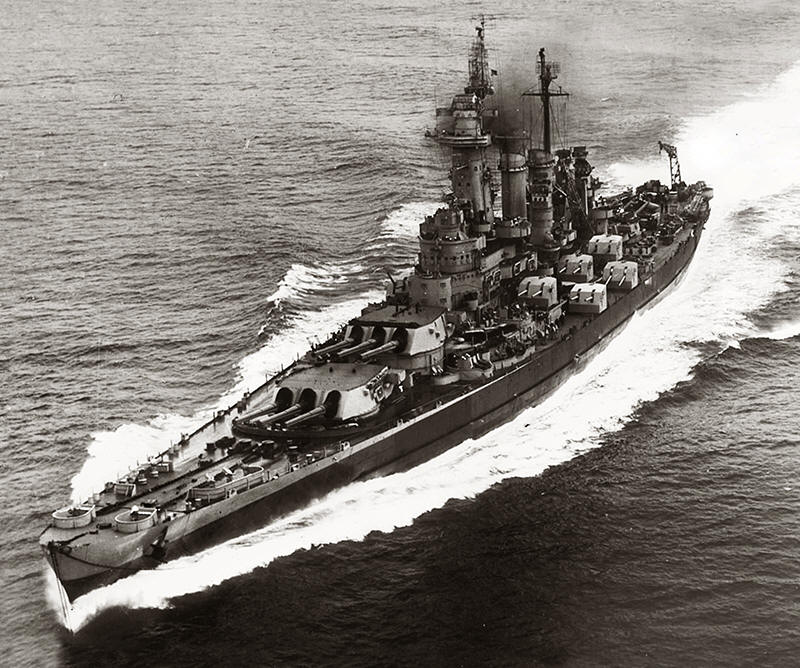
NAVYPEDIA
 Support the project with paypal
Support the project with paypal
Photo

North Carolina 1942
Ships
| No | Name | Yard No | Builder | Laid down | Launched | Comm | Fate |
|---|---|---|---|---|---|---|---|
| BB55 | North Carolina | New York N Yd, Brooklyn | 27.10.1937 | 13.6.1940 | 9.4.1941 | stricken 6.1960, preserved | |
| BB56 | Washington | Philadelphia N Yd | 14.6.1938 | 1.6.1940 | 15.5.1941 | stricken 6.1960 |
Technical data
| Displacement standard, t | 37484 |
|---|---|
| Displacement full, t | 44377 |
| Length, m | 217.8 wl 222.1 oa |
| Breadth, m | 33.0 |
| Draught, m | 10.0 full load |
| No of shafts | 4 |
| Machinery | 4 sets General Electric geared steam turbines, 8 Babcock & Wilcox boilers |
| Power, h. p. | 121000 |
| Max speed, kts | 28 |
| Fuel, t | oil 6260 |
| Endurance, nm(kts) | 17450 (15) |
| Armour, mm | belt: 305 - 168 on 19-mm STS plating, main deck: 140 - 127, upper deck: 37, splinter deck: 16 - 19, bulkheads: 279, barbettes: 292 - 406, turrets: 406 face, 178 crown, 249 sides, 300 rear, secondary guns: 51, CT: 373 - 406 sides, 178 roof |
| Armament | 3 x 3 - 406/45 Mk 6, 10 x 2 - 127/38 Mk 12, 4 x 4 - 28/75 Mk 1, 12 x 1 - 12.7/90, 2 catapults, 3 seaplanes (OS2U, SOC) |
| Complement | 1880 |
Standard scale images

North Carolina 1942
Graphics
Project history
First American battleships built after the "battleship vacation". Building of ships with characteristics close under the characteristics of "standard" battleships was first provided. In her design the basic thrust has been made on providing of protection and powerful armament at enough moderate speed. In 1935 the General Board has reconsidered requirements to the future battleships: now with protection and armament not the smaller attention was given to the speed. Some variants of the project with contractual 35000t displacement and with 27 to 30kts speed have been prepared. General Board tended to a variant with 30kts speed and nine 356mm guns in three turrets, however for the further study was the project of more slow-speed (27kts) ship with 11 356mm guns in three- and quadruple turrets (soon number of guns was reduced to 12, with replacing of a triple turret by a quadruple) was chosen.
Armour ensured protection against 356mm shells: the maximum calibre provided by limitations of 1936 London Naval conference (35000t standard displacement, 356mm guns). As the ultimate protocol was signed only by UK, USA and France, it was provided that if within a year Japan will not sign a Treaty, the mentioned limitations become invalid and come into effect new: 45000t and 406mm guns. When it became clear, that Japan will not respect conference decisions, design of new USN battleships was changed considering changed situation. Caliber of main guns was raised to 406mm (quadruple turrets were replaced by triple with smaller barbette diameter), however it was impossible to increase protection: it may be possible only with complete re-design of the hull (it was decided to make on following class). Under 356mm shells fire North Carolina and Washington had immune zone between 100 and 154cables, under 406mm shells it was narrowed to 116-130cables (105-135cables for magazines). Armour has been fulfilled under the traditional USN "all or nothing" scheme, with number of armour decks, increased to three: besides main and splinter deck there was also upper deck for bomb fuse actuating. External armoured belt was declined 15° outside, raisin its strength on big distances.
Heavy AA armament of new ships was designed as very powerful at the design stage: 10 twin 127/38mm mounts amidships, placed on two circles in the letter "W" form, became the standard for subsequent classes of USN battleships. Light AA armament was worse and provided by the 28mm MGs nicknamed "Chicago pianos", being whimsical and unreliable. Practically right after commission they were replaced by quadrupled 40mm Boforses and 12.7mm MGs were replaced by 20mm Oerlikons.
Ship protection
136m belt, inclined at 15° to vertical, had 5.5m height and was 305mm thick (on 19mm plating) at upper part tapering to 168mm at lower edge. Belt was connected with end barbettes by 282mm bulkheads. Steering gear compartment had its own 378mm belt with 282mm bulkheads. Flat main armour deck was connected with upper edge of the belt and was 140-127mm over citadel. One level higher there was 38mm upper deck. Its thickness decreased to 25-19mm fwd from No1 barbette. One level lower was flat 19-16mm splinter deck. This deck extended aft from No3 barbette and was 152mm over the steering gear. Main gun turrets had 406mm faces, 249mm sides, 300mm rears and 178mm crowns. Barbettes over main deck were 373mm at fore parts, 406mm at sides and 292mm aft. They consisted from two rings (73mm outer and 37mm inner) under main deck. CT had 406mm sides, 373mm fwd and aft parts, 178mm roof and 102mm deck. Underwater protection consisted from 5 compartments and could resist exploding of 317kg TNT. Longitudinal bulkhead had 95-51mm thickness only abreast magazines.
Modernizations
late 1941, North Carolina: + 1 x 4 - 28/75 Mk 1
3/1942, North Carolina: + 33 x 1 - 20/70 Mk 4, CXAM, 2x Mk 3, 3x Mk 4 radars
4/1942, North Carolina: + 7 x 1 - 20/70 Mk 4
4/1942, Washington: + 20 x 1 - 20/70 Mk 4, CXAM, 2x Mk 3, 3x Mk 4 radars
7/1942, both: + 16 x 1 - 12.7/90
9/1942, Washington: + 20 x 1 - 20/70 Mk 4
11/1942, North Carolina: - 5 x 4 - 28/75, 28 x 1 - 12.7/90, CXAM radar; + 10 x 4 - 40/56 Mk 1.2, 6 x 1 - 20/70 Mk 4, SG, Mk 4 (4th) radars
11/1942, Washington: - 5 x 1 - 20/70, 28 x 1 - 12.7/90, CXAM radar; + 2 x 4 - 28/75 Mk 1, SG, Mk 4 (4th) radars
4/1943, Washington: + 29 x 1 - 20/70 Mk 4
6/1943, North Carolina: + 4 x 4 - 40/56 Mk 1.2
7/1943, Washington: - 6 x 4 - 28/75; + 10 x 4 - 40/56 Mk 1.2
8/1943, Washington: + 5 x 4 - 40/56 Mk 1.2
11/1943, North Carolina: + 1 x 4 - 40/56 Mk 1.2
3/1944, North Carolina: - Mk 3 radar; + 7 x 1 - 20/70 Mk 4, SG (2nd), SK, 2x Mk 8, Mk 27 radars
4/1944, Washington: - 1 x 1 - 20/70, Mk 3 radar; + 1 x 4 - 20/70 Mk 4, SG (2nd), SK, 2x Mk 8, Mk 27 radars
9/1944, North Carolina: - SK, 4x Mk 4 radars; + SK-2, 4x Mk 12.22 radars, TDY ECM suite
9/1944, Washington: - 4x Mk 4 radars; + 4x Mk 12.22 radars, TDY ECM suite
summer 1945, North Carolina: - 33 x 1 - 20/70; + 9 x 4 - 40/56 Mk 1.2, 8 x 2 - 20/70 Mk 4, SR, SCR-720 radars; Full Dp was 46700 t.
autumn 1945, Washington: + 8 x 2 - 20/70 Mk 4, SR, SCR-720 radars; Full Dp was 46796t.
1/1946, BB55 North Carolina: 3 x 3 - 406/45 Mk 6, 10 x 2 - 127/38 Mk 28, 24 x 4 - 40/60 Mk 2, 8 x 2 - 20/70 Mk 24, 20 x 1 - 20/70 Mk 10, 2 catapults, 3 seaplanes, 2x SG, SK-2, SR, SCR-720, Mk 3, 2x Mk 8, 4x Mk 12.22, Mk 27 radars, TDY ECM suite
1/1946, BB56 Washington: 3 x 3 - 406/45 Mk 6, 10 x 2 - 127/38 Mk 28, 15 x 4 - 40/60 Mk 2, 1 x 4 - 20/70 Mk 15, 8 x 2 - 20/70 Mk 24, 63 x 1 - 20/70 Mk 10, 2 catapults, 3 seaplanes, 2x SG, SK, SR, SCR-720, Mk 3, 2x Mk 8, 4x Mk 12.22, Mk 27 radars, TDY ECM suite
1946-1948, North Carolina: - 2 x 4 - 40/60, 20 x 1 - 20/70, 2 catapults, 3 seaplanes; + 8 x 2 - 20/70 Mk 24
1946-1948, Washington: - 2 x 4 - 40/60, 1 x 4 - 20/70, 63 x 1 - 20/70, 2 catapults, 3 seaplanes; + 8 x 2 - 20/70 Mk 24
Naval service
North Carolina 15.9.1942 was damaged by a torpedo from Japanese submarine; repair lasted till the end of a year.
 HOME
HOME FIGHTING SHIPS OF THE WORLD
FIGHTING SHIPS OF THE WORLD UNITED STATES OF AMERICA
UNITED STATES OF AMERICA CAPITAL SHIPS AND MONITORS
CAPITAL SHIPS AND MONITORS NORTH CAROLINA battleships (1941)
NORTH CAROLINA battleships (1941)



